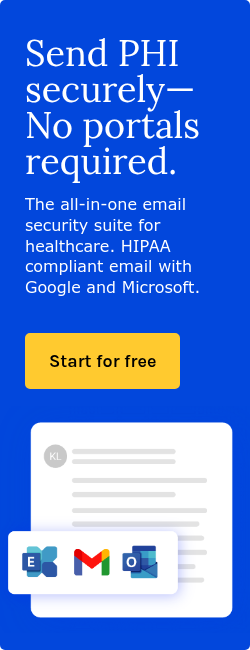
What are healthcare legacy systems?
Legacy systems are outdated software, technology, or processes that are no longer produced, updated, or protected when newer, superior technology is released.
According to a 2021 HIMSS survey, 73% of healthcare providers use legacy operating systems. The typical legacy operating systems (OS) include:
- Windows Server 2008 (35%)
- Windows 7 (34%)
- Legacy medical device OS (25%)
- Industrial control system OS (21%)
- Windows XP (20%)
- Windows Server 2003 and 2003 R2 (19%)
The problem with legacy systems
HIMSS also states that many of these providers “may not necessarily be planning for obsolescence of these operating systems.” So, while “every asset has a useful life… it is important for organizations to plan for its end of life.”
Without this planning, healthcare providers risk having outdated technology that will hinder efficiency, compromise the quality of patient care, and result in higher security exposures. The more these systems age, the higher the maintenance and the more difficult it becomes to integrate them into new technologies, interfering with digital transformation and healthcare service delivery.
Furthermore, the Journal of Business Research’s publication on the Digital Transformation of the Healthcare Sector adds that legacy systems cause multiple barriers to healthcare efficiencies, ultimately impacting patient safety, delaying treatments, and contributing to provider burnout.
Slower processes, longer wait times
Legacy systems often require excessive manual data entry, diverting clinicians' attention from patient care. As the publication explains, "more time spent entering data than looking after patients.”
Additionally, the "continued partial adherence to old systems, which combines digital and hard-copy records, [makes] e-health innovations counterproductive."
For example, if a nurse struggles with an outdated system while managing multiple patients. With some records still on paper, they waste time switching between digital and physical formats, delaying treatment, increasing wait times, and patient frustration.
Higher risk of errors
Legacy systems create inefficiencies in documentation, increasing the risk of potential data errors. For instance, "frequent issues arising due to accidental contradictions in documentation by two providers" can cause conflicting medical records, leading to misdiagnoses and improper treatments.
Furthermore, "miscommunication because of documentation in different places" makes it difficult for providers to access complete patient histories, increasing the chance of incorrect information during care. These issues are exacerbated by outdated systems that lack integration, contributing to a higher risk of errors in patient care.
Poor interoperability hurts coordination
Legacy systems often struggle with poor interoperability, preventing data sharing between departments or among different healthcare facilities. The Journal of Business Research explains that "problems accessing information due to IT issues" and "no comprehensive patient database" make it difficult for providers to communicate effectively.
These fragmentation issues can lead to repeated tests, missed follow-ups, and uncoordinated care, especially for patients with chronic conditions who need more holistic care.
Increased costs and staff burnout
Evidently, maintaining outdated systems requires constant troubleshooting and expensive upgrades. At the same time, inefficient workflows contribute to staff dissatisfaction.
The research study on the Digital Transformation of the Healthcare Sector states that clinicians often feel that "more focus on completing e-records accurately distracts attention from patient interaction," leading to burnout and reduced quality of care. Notification fatigue is another issue, with providers sometimes "overlooking patient alerts and just clicking through," potentially missing critical health updates.
The study also mentions persistent issues like “technology not reliable with servers going down frequently” and “clunky systems with non-intuitive design.” These inefficiencies slow down workflows, increase administrative burdens, and divert attention from patient care.
Cybersecurity risks and data breaches
Legacy systems are vulnerable to cyberattacks, putting patient data at risk. The study specifically mentions "lack of reliability of computer systems," "vulnerability to cyberattack," and "concerns about data security." A security breach or system failure can disrupt access to EHRs, delaying treatments and compromising patient privacy.
These weaknesses expose healthcare organizations to potential security breaches, which can disrupt access to electronic health records (EHRs). These breaches delay critical treatments and compromise patient privacy, making it harder to maintain trust in healthcare services and safeguard patients’ protected health information (PHI).
In a Healthcare Digital article, Mikko Hypponen, Chief Research Officer at F-Secure, explains that because “most medical systems are publicly funded, the world’s health data is often stored in old legacy technology, running on outdated operating software.” These vulnerabilities make it easier for attackers to exploit sensitive patient information, as “necessary system upgrades are unlikely to be available.”
Healthcare facilities are prime targets for ransom trojans, where attackers “shut down certain operations, before then demanding a ransom to reverse the disruption.” This downtime can put “human lives and health at risk, and criminals know this.”
The pressure forces some institutions to consider paying, even though “there is no guarantee that attackers would stand down and not repeat the threat at a later date.”
More specifically, data breaches could compromise X-rays, MRI scans, and confidential doctor-patient communications. If compromised, the information could be used for blackmail, further jeopardizing patient privacy.
When legacy systems do not undergo regular security patches, attackers can exploit known vulnerabilities, increasing the frequency and severity of breaches. The lack of modernization also makes it harder for hospitals to implement new cybersecurity defenses, leaving them open to repeated attacks. Without urgent intervention, legacy systems will continue to expose patients and healthcare institutions to cyber threats.
Without proper upgrades, healthcare institutions risk ransomware attacks that can shut down operations. “Unlike most other industries, disruptions in healthcare can put human lives and health at risk, and criminals know this,” Hypponen warns.
Hypponen also references the 2021 Finnish Vastaamo Psychotherapy Centre breach, which severely impacted individuals. The private mental health provider failed to secure patient records, exposing personal information. Jere, one of thousands affected, received a ransom demand threatening to release therapy notes detailing his struggles with addiction and mental health.
The provider’s outdated IT infrastructure left sensitive data exposed, targeting 30,000 individuals, making it "the largest criminal case in Finnish history."
Go deeper: Why healthcare is a major target for cyberattacks
The way forward
Healthcare organizations must retire obsolete systems and replace them with systems that use encryption, multi-factor authentication, and HIPAA compliant data storage. These systems must also be intuitive and fully integrated to improve patient outcomes and strengthen the organization’s overall cybersecurity.
How to replace legacy systems
1. Conduct a system auditHealthcare organizations must evaluate their existing technology, identifying outdated software, unsupported operating systems, and integration gaps. Moreover, U.S. federal law mandates that these systems must adhere to HIPAA regulations protecting PHI during storage, access, and transmission.
2. Develop a transition plan
Healthcare providers must map out a phased approach that minimizes disruptions. The transition could involve gradually migrating departments, running legacy and new systems in parallel, and training staff for a smooth transition. HIPAA compliant platforms must be implemented before data migration to avoid security gaps during the transition.
3. Invest in interoperable and HIPAA compliant solutions
Modern systems must support data exchange across different organizations including hospitals, clinics, pharmacies, and insurers while meeting HIPAA's security and privacy requirements. Instead of replacing one siloed system with another, healthcare organizations should adopt cloud-based platforms that integrate EHRs.
HIPAA compliant solutions, like Paubox, also offer access controls, audit logs, and secure messaging, helping organizations comply to meet these requirements.
4. Prioritize cybersecurity and compliance
As Mikko Hypponen warns, “These outdated operating systems are leaving sensitive data out in the open and extremely vulnerable to attack.”
New systems must include advanced encryption and threat monitoring to safeguard electronic PHI and reduce the risk of potential data breaches.
5. Secure funding and stakeholder buy-in
Since legacy system replacement can require significant financial investment, organizations can look towards securing funding through government grants, private investment, or partnerships.
6. Train staff on new systems and HIPAA compliance
Organizations must provide comprehensive training sessions, user-friendly interfaces, and ongoing support so staff can use the new technology while maintaining HIPAA compliance. Regular HIPAA training should cover secure data handling, phishing prevention, and patient confidentiality protocols.
FAQs
Why are legacy systems still used in healthcare?
Many healthcare organizations rely on legacy systems due to cost constraints, the complexity of migrating data, and resistance to change from staff accustomed to older workflows.
How do legacy systems affect patient care?
Legacy systems slow down processes, increase wait times, and make it harder for providers to access and share patient records, leading to delays in treatment and potential medical errors.
Read also: Reduce healthcare errors with HIPAA compliant emails
Why are legacy systems a cybersecurity risk?
Legacy systems are vulnerable to cyberattacks, data breaches, and ransomware. Since outdated software often lacks security updates, hackers can easily exploit weaknesses to access sensitive patient records. This puts hospitals at risk of operational shutdowns, financial losses, and legal consequences.
Without modern encryption and security protocols, legacy systems leave patient data exposed, making healthcare organizations prime targets for cybercriminals. Healthcare organizations must upgrade to modern HIPAA compliant systems to prevent unauthorized access, protect patient privacy, and improve healthcare operations.
Learn more: HIPAA Compliant Email: The Definitive Guide (2025 Update)
Subscribe to Paubox Weekly
Every Friday we'll bring you the most important news from Paubox. Our aim is to make you smarter, faster.



